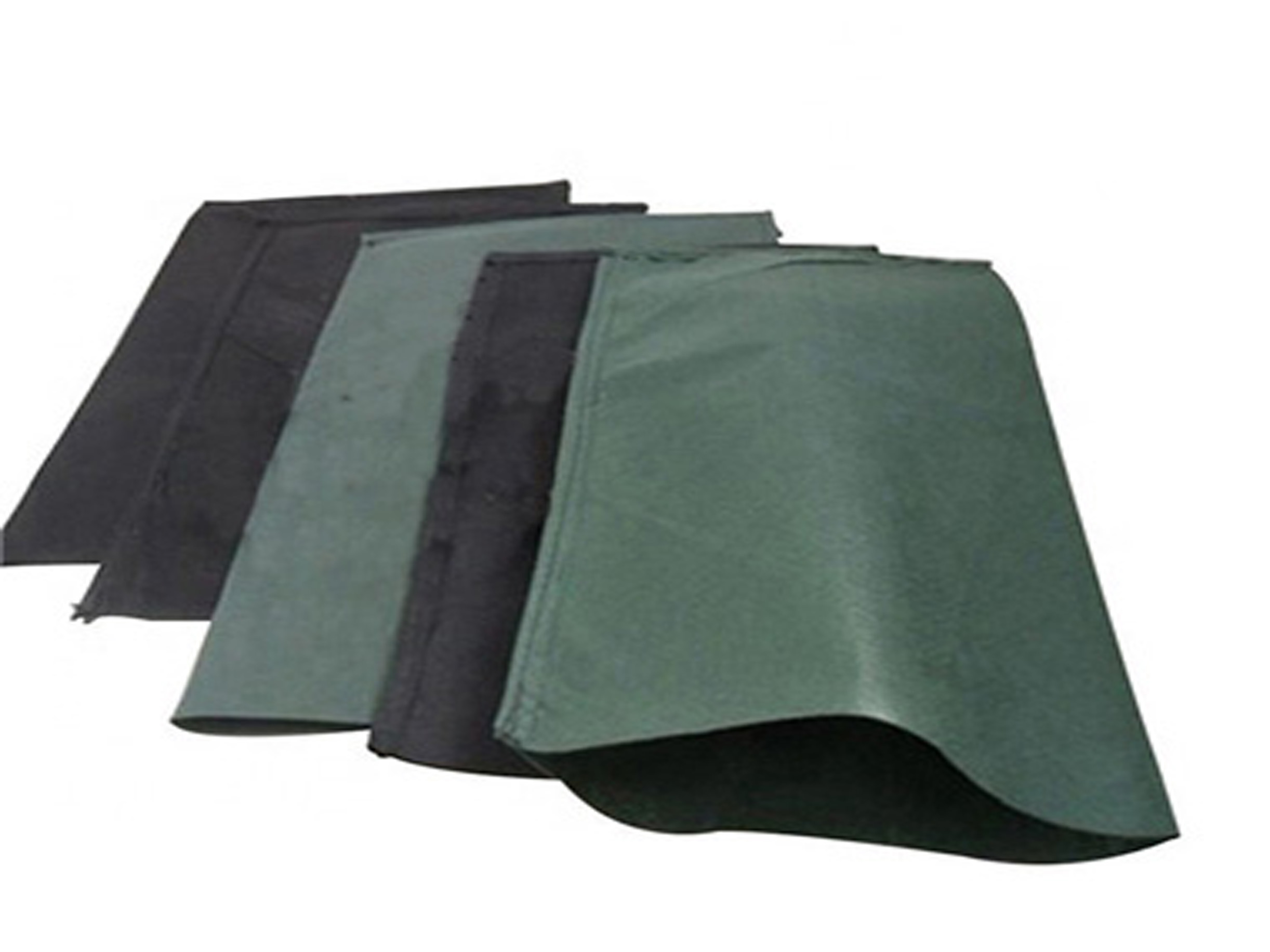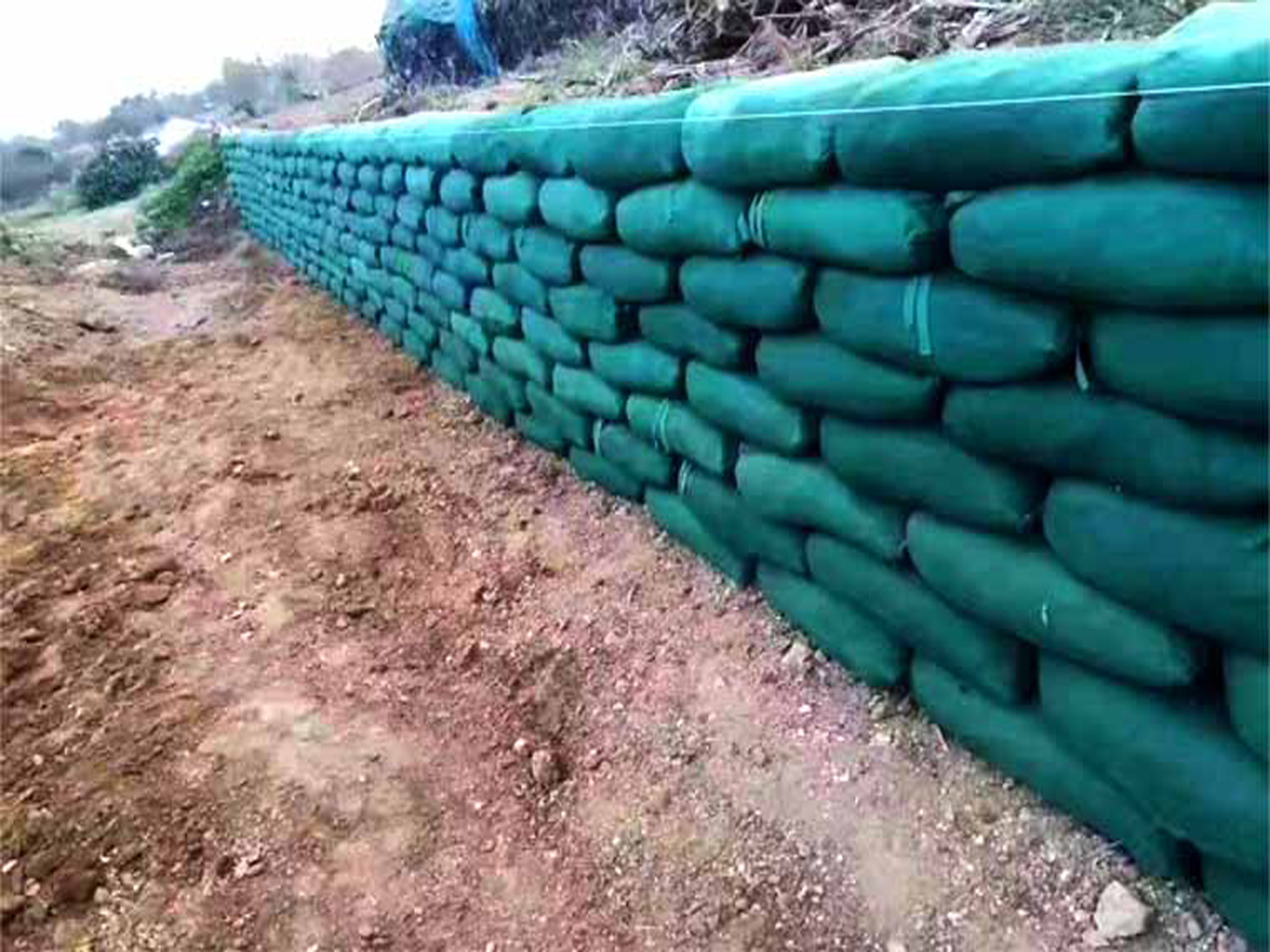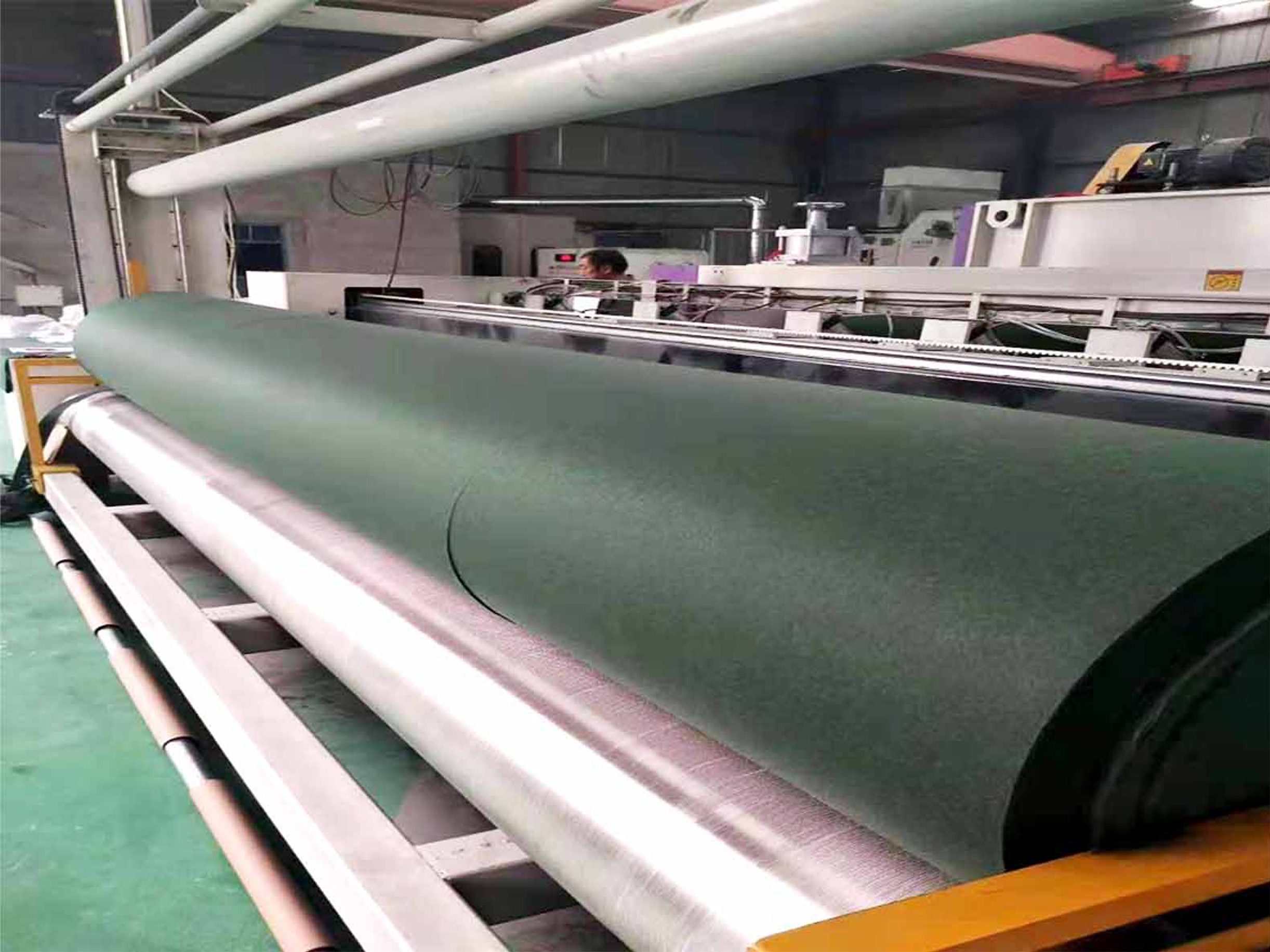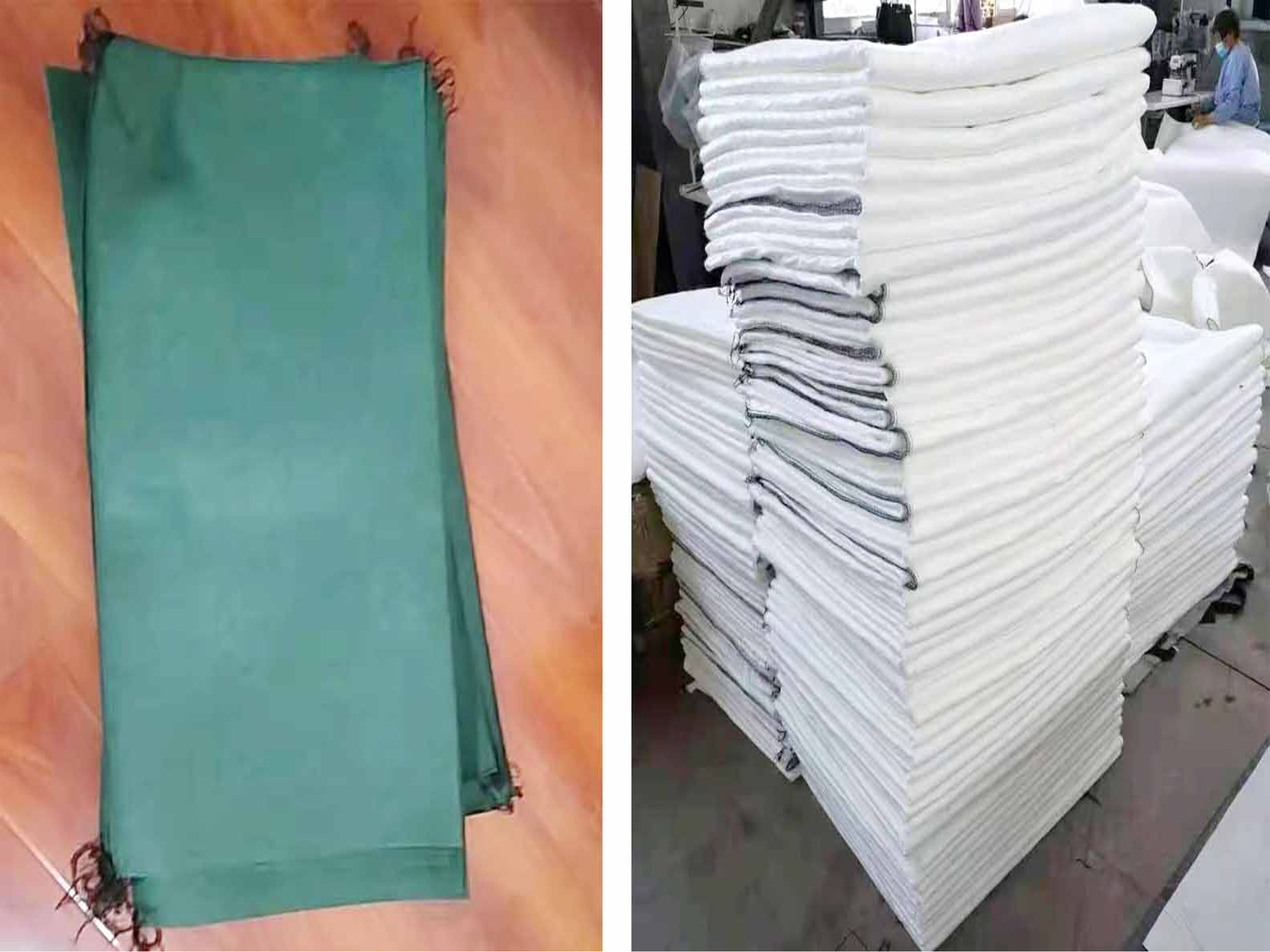Geobags build into a vegetated wall which is planted with the native plants, soil and seeds. Within few
weeks, the plants grow through the bags and develop extensive root systems that lock into the native soil
and form an ecological sound vegetated erosion control system with permanent structural strength.
Physical dimension for ecological bag will be determined based upon the project requirement
Performance:
1. Anti-moisture
Eco-bag raw materials do not absorb water, and the bag will not be damaged when moisture appears, and the
bag will not be deformed, and it is insoluble in contaminated liquid
2. Chemical resistance (PH)
Extensive research and testing have shown that ecological bags have strong resistance to certain
concentrations of acid and alkali chemicals, and can be used in most solid and heavily polluted locations
3. Resistance to biodegradation and animal destruction
The eco-bag uses special formula materials, does not support, does not absorb, does not help the growth of
fungi, does not rot, does not mold, and does not deteriorate. Eco bags will not be digested by insects and
related animals, and will not become food for gnawing animals (rats), termites, borers, beetles,
silverfish moths, etc.
4. Anti-purple polymer
The eco-bag can withstand a high temperature of 150 degrees Celsius without melting, and can withstand the
lowest temperature of -40 degrees Celsius.
5. Anti-ultraviolet (UV)
The eco-bag contains carbon ink and other anti-UV ingredients.
6. Low cost
In slope engineering, this new type of material can completely replace stone, cement and other materials,
which can greatly reduce
Application:
1. Ecological restoration
1)Constructed Wetland and Both Sides Of The River
The natural riparian environment where humans and wildlife coexist.
2)Mine Re-greening
Comprehensive utilization of gangue, scientifically rectifying subsidence areas, greening barren hills,
purifying water and gas, creating a new era of ecological restoration of mines and re-greening of barren
hills.
3)Treatment of Landslides on The Shores of Seas and Lakes, Surface Landslides, Culvert Openings, Drainage
Ditches, Soil Erosion, Irrigation Systems, etc.
2.Infrastructure Construction
1)Road Slope Protection
Railway and highway slope protection, suitable for excavation slopes and filling slopes.
2)River and Lake Slope Protection
Military facilities and emergency flood control, shelters, flood control dams, etc.
Suitable for the slopes of rivers, lakes and reservoirs
3)Special Applications
3. Landscaping and Residential
1)Vertical Greening and Garden Art
2)Commercial Residential Area
3)Roof Garden Greening.




